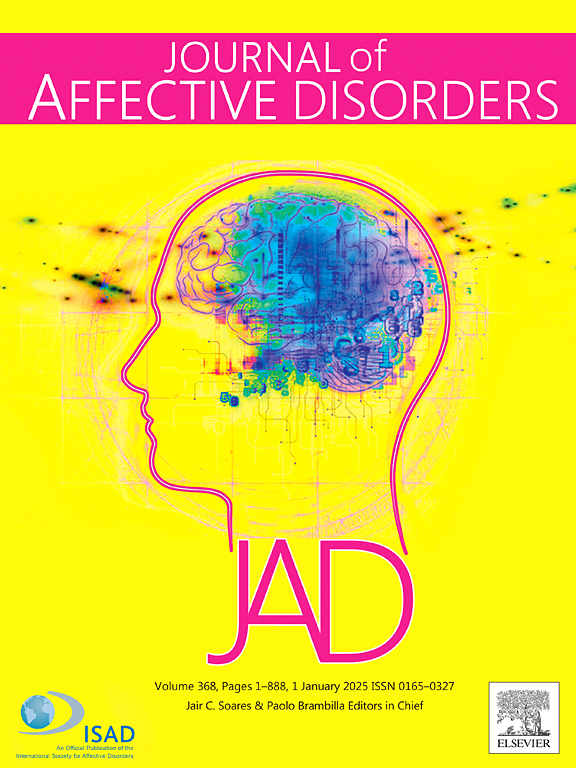The longitudinal trajectory of depression and anxiety across the perinatal period
IF 4.9
2区 医学
Q1 CLINICAL NEUROLOGY
引用次数: 0
Abstract
The understanding of long-term depression and anxiety trajectories across the perinatal periods is lacking. This longitudinal study investigated the change trajectories of both depressive and anxiety symptoms, as well as the associations of their trajectories over five years. The study included nulliparous participants (N = 163, Mage = 33.47, SDage = 3.53) with self-reported depressive and anxiety symptoms collected via questionnaires at 30- and 35 weeks' gestation, 1.5, 3, 6, 12, 24, and 60 months postpartum. Data were analysed using structural equation latent growth modelling with and without covariates. Symptoms of depression increased significantly during pregnancy (p < .001), and both depression and anxiety symptoms increased during postpartum (p-values<.001). A previous mental health history was significantly associated with greater depressive symptomology (p = .001), and White individuals (compared to non-White) tended to have greater depression and anxiety symptoms during pregnancy (p-values<.05). At 30- and 35-weeks' gestation, 6 weeks postpartum, 3, 6, 12, 24 months, and 5 years postpartum 2.5 %, 2.0 %, 4.6 %, 4.0 %, 7.3 %, 5.6 %, 3.5 % and 8.0 % of participants had clinically significant depressive symptoms and 6.1 %, 8.5 %, 7.1 %, 12.0 %, 11.9 %, 8.1 %, 7.9 %, and 28 % had clinically significant anxiety symptoms. This study highlights the need to assess both depression and anxiety in perinatal care, and to identify individuals who may require intervention.
围产期抑郁和焦虑的纵向轨迹。
人们对围产期抑郁和焦虑的长期轨迹缺乏了解。这项纵向研究调查了抑郁症状和焦虑症状在五年内的变化轨迹及其关联。研究对象包括无产褥期的参与者(N = 163,Mage = 33.47,SDage = 3.53),他们在妊娠 30 周和 35 周、产后 1.5 个月、3 个月、6 个月、12 个月、24 个月和 60 个月时通过问卷收集了自我报告的抑郁症状和焦虑症状。采用结构方程潜增长模型对数据进行了分析。孕期抑郁症状明显增加(p
本文章由计算机程序翻译,如有差异,请以英文原文为准。
求助全文
约1分钟内获得全文
求助全文
来源期刊

Journal of affective disorders
医学-精神病学
CiteScore
10.90
自引率
6.10%
发文量
1319
审稿时长
9.3 weeks
期刊介绍:
The Journal of Affective Disorders publishes papers concerned with affective disorders in the widest sense: depression, mania, mood spectrum, emotions and personality, anxiety and stress. It is interdisciplinary and aims to bring together different approaches for a diverse readership. Top quality papers will be accepted dealing with any aspect of affective disorders, including neuroimaging, cognitive neurosciences, genetics, molecular biology, experimental and clinical neurosciences, pharmacology, neuroimmunoendocrinology, intervention and treatment trials.
 求助内容:
求助内容: 应助结果提醒方式:
应助结果提醒方式:


